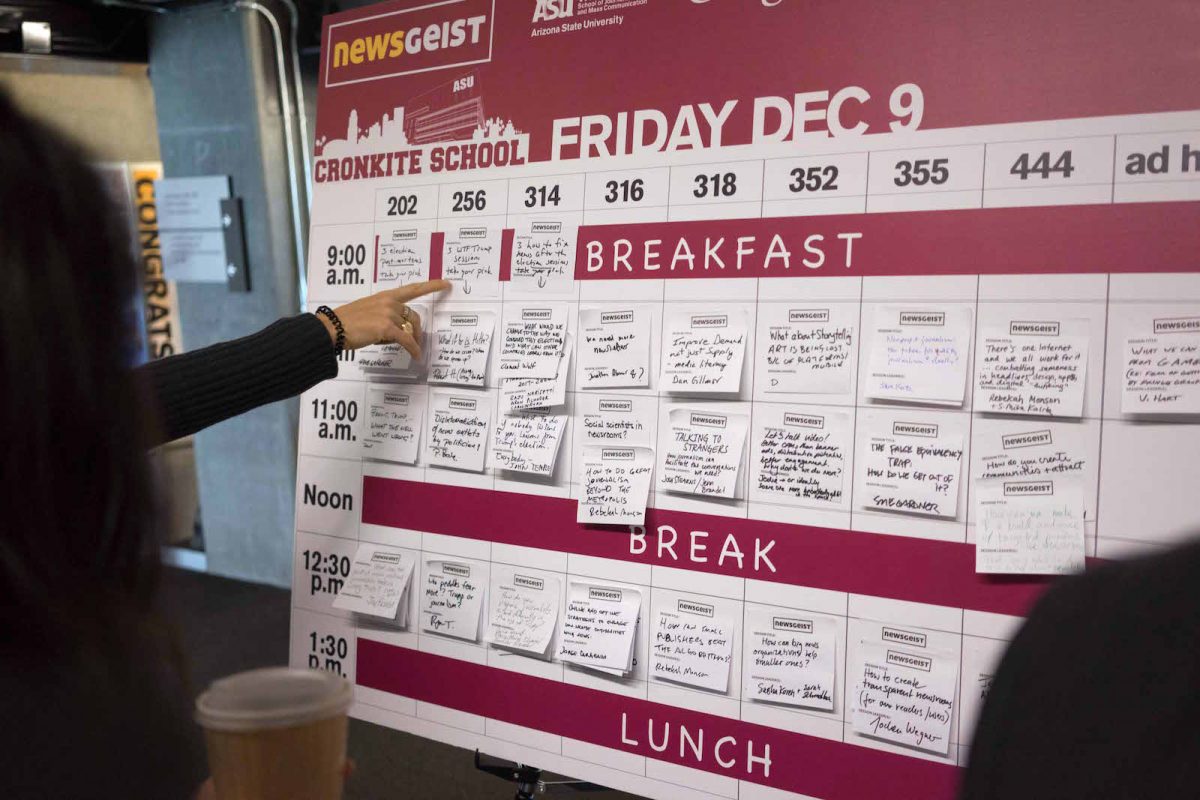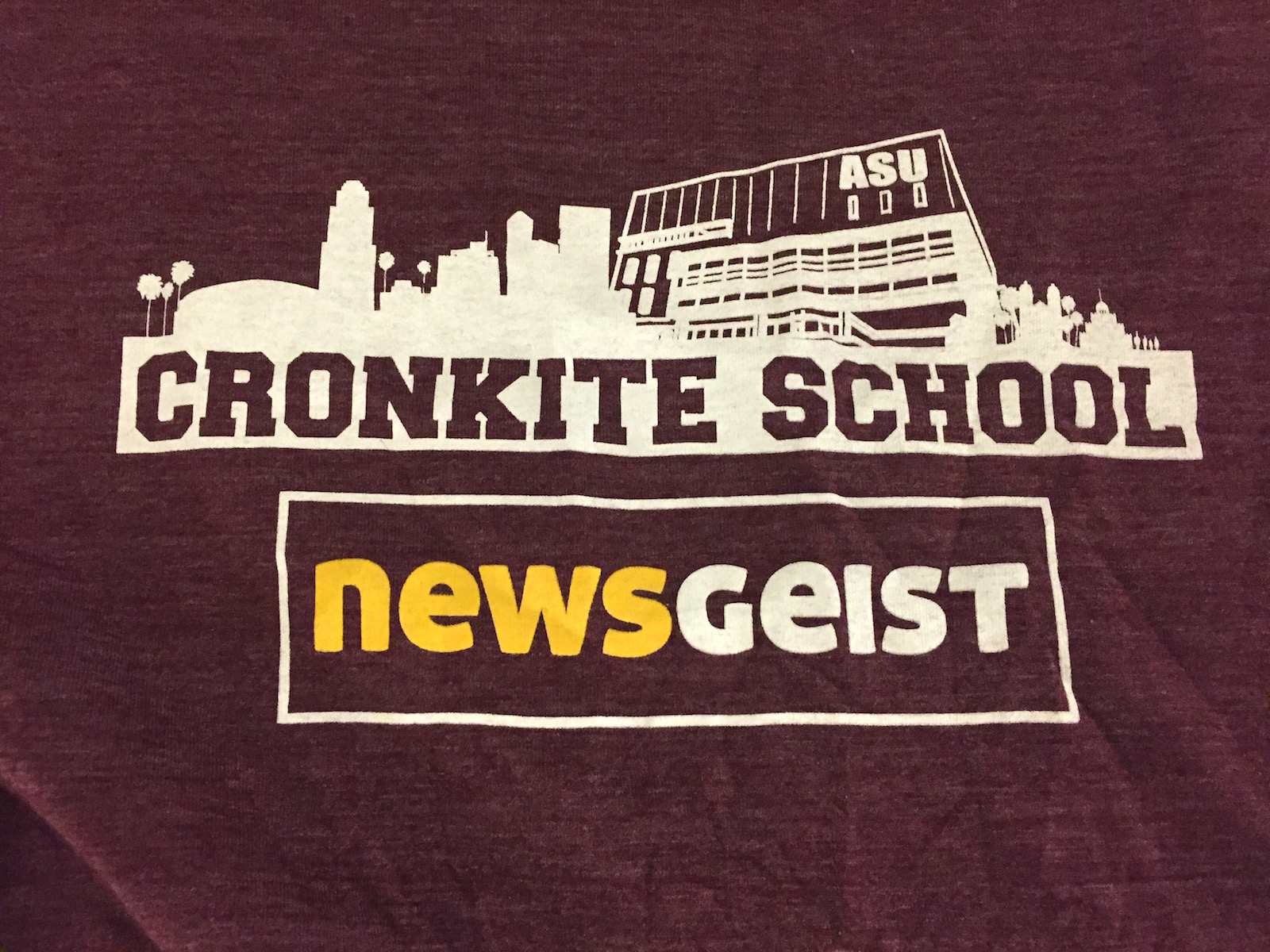Twelve takeaways for improving journalism from the 2016 Newsgeist conference
PHOENIX — If the Newsgeist 2016 conference had a formal theme, it could have been “trust.” As in, the public has lost trust in the media.
The discussions on panels and in the hallways often followed that thread: How did the media lose that trust? How can we regain it? There were no easy answers, but people gave it a try.
Newsgeist is an event focused on the future of news, attended by media professionals and people interested in media. About 170 people spent Dec. 10 through 12 at the Walter Cronkite School of Journalism at Arizona State University. The invite-only event was sponsored by the Knight Foundation and Google.

It’s an “unconference” – meaning the agenda is not set in advance, but created by attendees after they show up. They also run the discussions. The flexible approach allows participants to talk about fresh issues or events, and focus on the topics that concern them the most. And it immunizes the conference from panels that might have sounded like a good idea two months earlier, but instead have become stale, or worse, irrelevant by conference time.
It wasn’t all unplanned. “Ignite talks,” which are short talks of five minutes each, were on pre-planned topics. The setup had an interesting twist: Speakers’ slides advanced automatically every 15 seconds, which creates a quick tempo.
People pitched ideas for panels on sticky notes, which were assembled into a schedule. Ideas ran a broad gamut: “Talking to strangers,” “Future of fact-checking,” “Combating fake news: Are plugins and algos enough?,” and “Why we need more newsletters.” Approaches ranged from the philosophical to the practical, with a heavy bent towards the practical. It was a format that worked well, since the issue of trust in media has gained momentum following the recent presidential election, in which most media outlets predicted a Hillary Clinton victory. Much journalistic angst that followed has centered on how those predictions could have been so off-base.
Media being media, journalists have offered up many possibilities: Perhaps journalists are not listening well, or at all, to large swathes of the public. In consequence, readers and former readers have become disenchanted with the media, feeling it does not represent them. Maybe it’s tied to the viral spread of fake news on social media, which has led to a suspicion of all media, no matter the quality. Or perhaps the media has been lumped in with a growing general distrust of all large institutions.
Whatever the causes, the journalists in Arizona were eager to explore the issue, from debating why it happened to seeking ways to fix the problem. To encourage a frank discussion, the conference followed “Chatham House rule,” which allows anyone to use information from the conference, but not to disclose anyone’s identity. So that’s why no names are used in this story.
A panel discussion, with questions from the audience, tackled the question of trust directly. Here’s some of the insights and ideas:
- The rush to be first with news erodes trust because so often the information is wrong or garbled. Can we rebuild newsrooms that are optimized for trust first, rather than clicks? Are we ready to put quality ahead of speed?
- People need to feel the newsroom has their back. Newsrooms need to be advocates for people.
- Be upfront about what issues or ideas your newsroom stands for. If there are five issues you intend to follow hard, tell readers what they are and why you are covering them. Make it easy for readers to understand the issues your newsroom covers.
- We have damaged relationships with people, or people feel there never has been a relationship, and they don’t care about us. We need to rebuild relationships with readers.
- Newsrooms need to be more diverse, not just in skin color, but in ideas and attitudes.
- Regain trust by directly confronting campaigns that argue that the media cannot be trusted.
- People measure media by the worst of the bunch. How can we help readers differentiate quality news sites from the garbage?
- We can learn from how fake new is presented. Many writers of fake news persuasively argue: “I am here defending your interests.”
- Should we apologize and tell readers we will fix it?
- What value do we provide to the community? People will trust media if we give them information that will help them solve their problems.
- Treat people as a community, not a commodity. We need to be less about creating content and more about creating community.
- We need to be more transparent and provide the background or the raw data we used so people can see for themselves how we arrived at the finished story.
Regaining the public’s trust was clearly on everyone’s mind. What was not clear was the path forward. Will journalists be able to break through to a skeptical public by more deeply engaging them? By treating them more as a community? Or by changing newsrooms’ makeup so it more closely resembles the outside community?
No pat answers, but plenty of journalists seemed willing to try new approaches.





